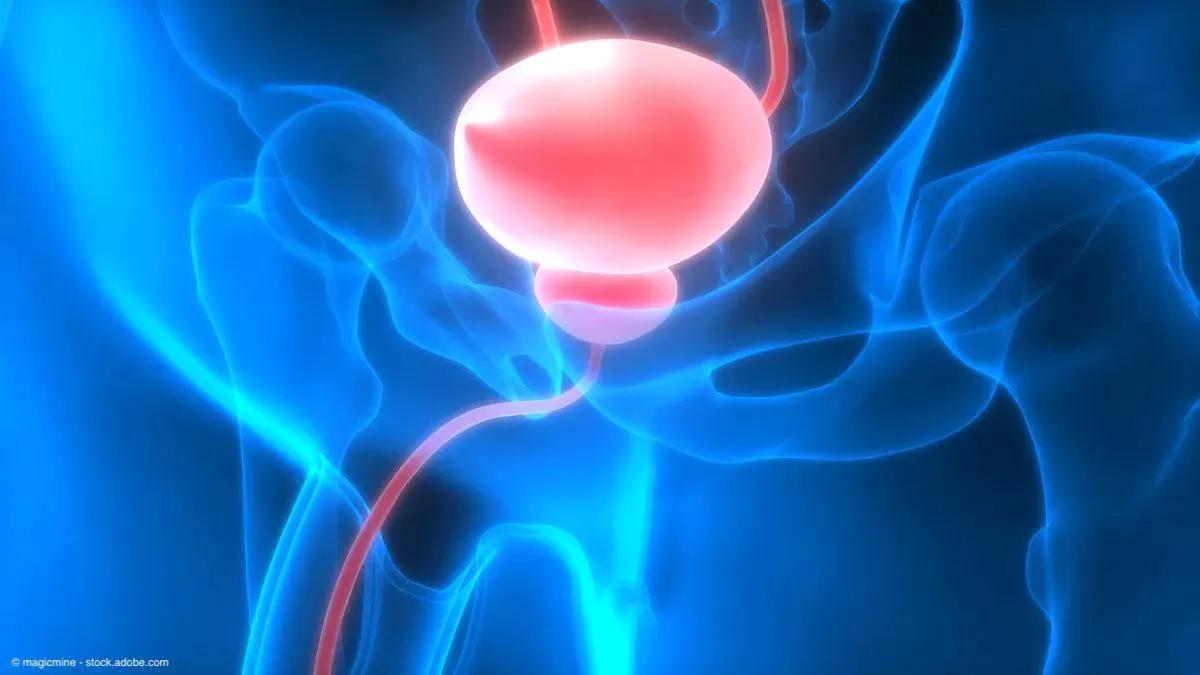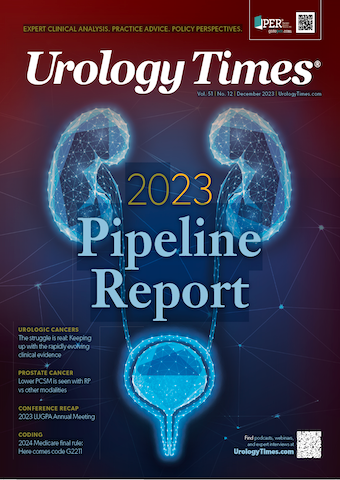News
Article
Urology Times Journal
Vitamin E supplementation increases risk of NMIBC recurrence
Author(s):
"Our data show no evidence of benefit from selenium and evidence of harm from vitamin E—a compound readily available over the counter," the authors write.
According to findings from the SELENIB trial (NCT00553345) published in JAMA Network Open, vitamin E supplementation is associated with an increased risk of recurrence in patients with newly-diagnosed non–muscle-invasive bladder cancer (NMIBC), and selenium supplementation does not reduce the risk of disease recurrence.1
Supplementation with either selenium or vitamin E was not associated with a significant difference in PFS or OS, nor in quality of life between the arms.

In total, the prospective, randomized study2 enrolled 270 patients with a new diagnosis of NMIBC (Ta, T1, or Tis) across 10 centers in the UK. The mean age of participants was 68.9 years. Patients were randomly assigned to receive either selenium (oral 200 μg/d of high-selenium yeast) plus placebo (n = 65), vitamin E (200 IU/d of d-alfa-tocopherol) plus placebo (n = 71), selenium plus vitamin E (n = 69), or placebo plus placebo (n = 65).
The primary outcome was recurrence-free interval (RFI), and secondary outcome measures included progression-free survival (PFS) and overall survival (OS). Median follow-up time among all patients was 5.5 years, with 228 patients being followed up for more than 5 years.
Among those who received either active selenium or placebo, there was 122 instances of recurrence, with 60 (49%) in the active selenium arm and 62 (51%) in the placebo arm. Among those who received either active vitamin E or placebo, there were 122 instances of recurrence, 72 (59%) of which occurred in the active vitamin E arm, and 50 (41%) of which occurred in the placebo arm.
Data showed no difference in RFI between those who received selenium (n = 134) and those who did not (n = 136) receive selenium (hazard ratio, 0.92; 95% CI, 0.65-1.31; P = .65). Median RFI was not reached in either the active selenium or placebo arms.
Further, patients who received vitamin E supplementation (n = 140) were shown to have a decreased RFI compared with those who did not (n -130) receive vitamin E supplementation (hazard ratio, 1.46; 95% CI, 1.02-2.09; P = .04). Patients in the placebo arm were shown to have a recurrence-free survival estimate of 59.6% at 5 years, compared with 46.5% among those who received vitamin E. The median RFI was 3.3 years among those who received vitamin E and was not reached in those who received placebo.
Overall, 37 patients in the study experienced disease progression, and 53 patients died. Supplementation with either selenium or vitamin E was not associated with a significant difference in PFS or OS, nor in quality of life between the arms.
Regarding safety, 1957 adverse events (AEs) were reported, of which 85 were serious AEs. All serious AEs were unrelated to treatment.
The authors concluded, “Our data show no evidence of benefit from selenium and evidence of harm from vitamin E—a compound readily available over the counter. Future micronutrient and/or vitamin chemoprevention studies in NMIBC should carefully consider choice of compound, underlying biology, preclinical evidence, and study design.”1
References
1. Bryan RT, Pirrie SJ, Abbotts B, et al. Selenium and vitamin E for prevention of non–muscle-invasive bladder cancer recurrence and progression: A randomized clinical trial. JAMA Netw Open. 2023;6(10):e2337494. doi:10.1001/jamanetworkopen.2023.37494
2. National Institutes of Health US National Library of Medicine ClinicalTrials.gov. Selenium and vitamin E in preventing cancer progression and recurrence in patients with early-stage bladder cancer. Last updated January 10, 2014. Accessed October 18, 2023. https://clinicaltrials.gov/study/NCT00553345

Newsletter
Stay current with the latest urology news and practice-changing insights — sign up now for the essential updates every urologist needs.






















